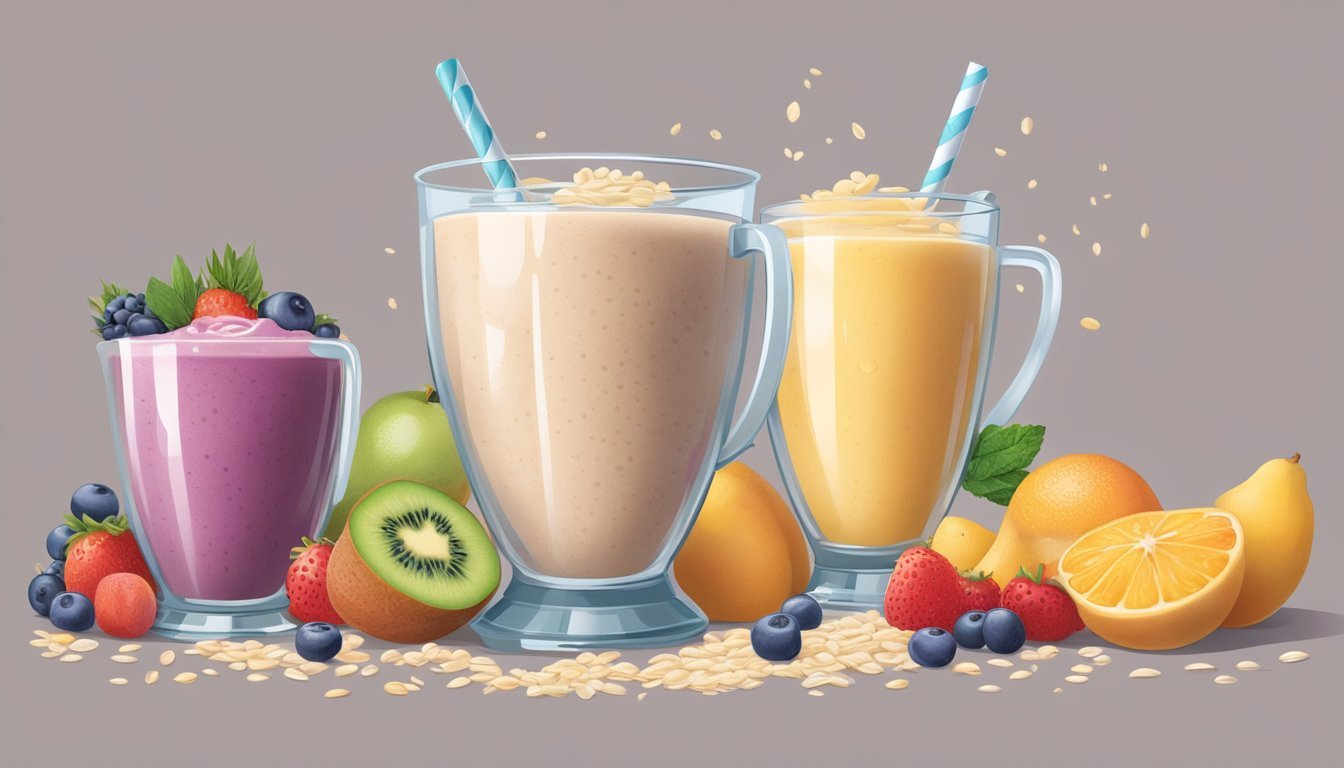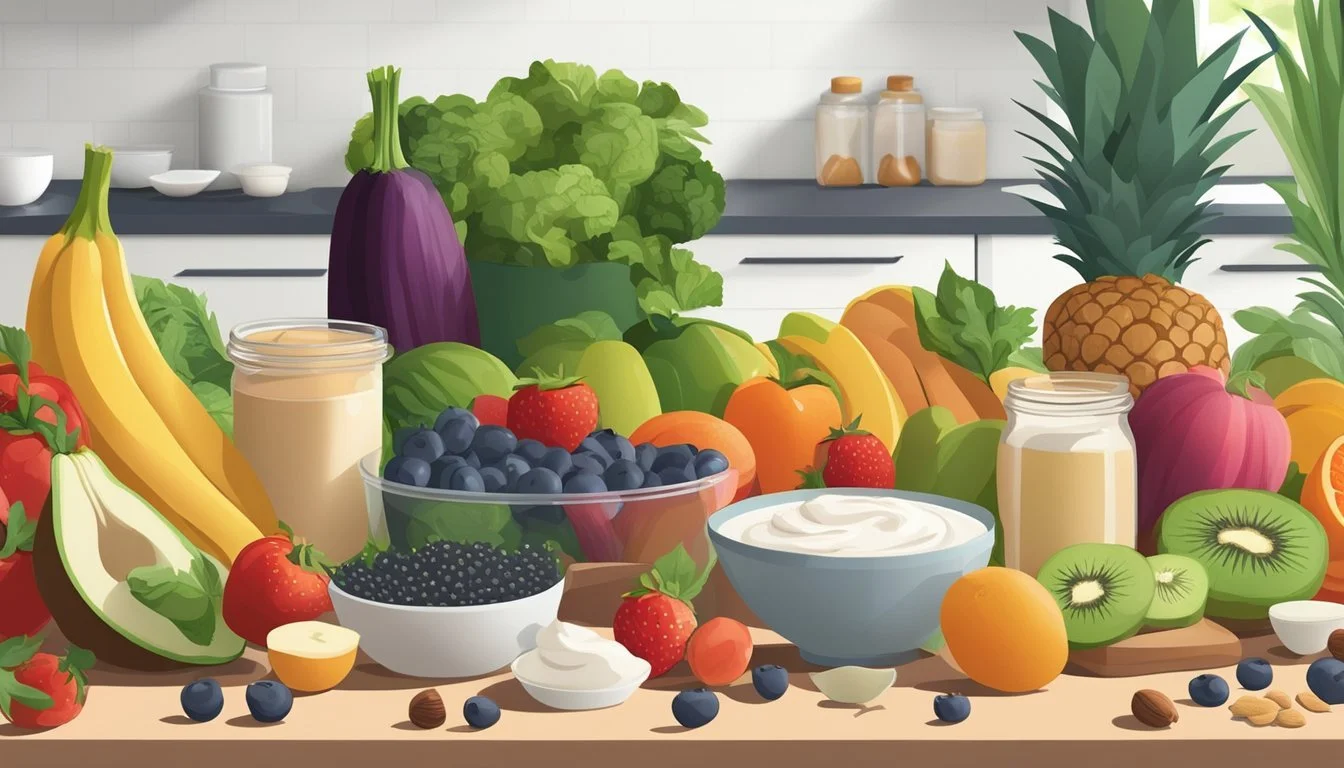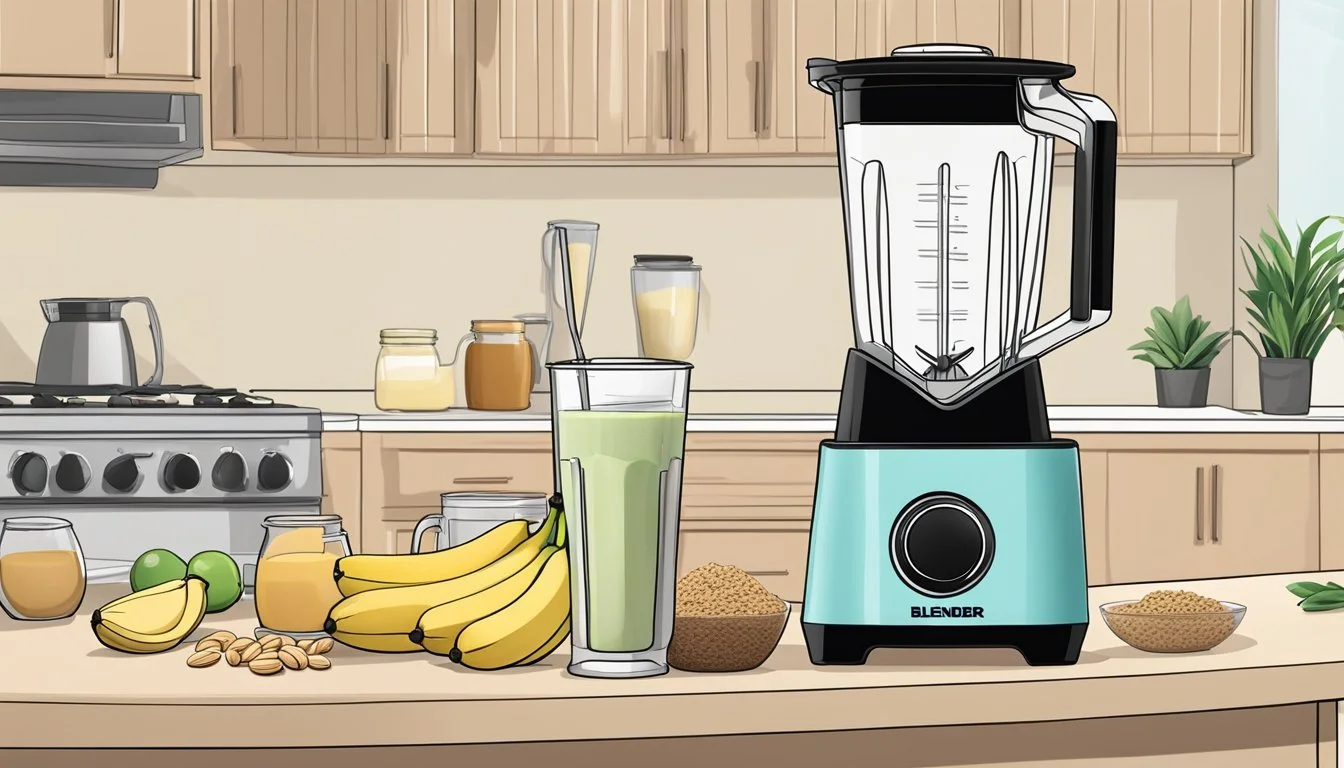Fixing Watery Smoothies
Tips for a Thicker, More Satisfying Blend
Many smoothie enthusiasts have encountered the disappointment of a watery blend when they're aiming for a thick, luxurious drink. Achieving the perfect smoothie consistency is a balance between the right ingredients and technique. A smoothie's texture can make or break the drinking experience, as a rich and creamy smoothie can be both more satisfying and able to carry flavors more effectively than its thinner counterpart.
Several strategies can remedy a blend that's too thin. Ingredients like frozen fruit can add frosty volume without diluting the flavor, while oats or nut butters provide thickness along with additional nutrients. Greek yogurt is another popular choice for enriching a smoothie's texture, owing to its creaminess and protein content. When used in the right proportions, these ingredients can transform a runny smoothie into a thick and decadent treat.
Understanding Smoothie Basics
Creating the ideal smoothie is both an art and a science, involving the right blend of ingredients, texture, and nutritional content. This section delves into the core principles that govern the smoothie-making process.
Components of a Perfect Smoothie
The foundation of a perfect smoothie is based on its component selection. A balanced mix should include:
Liquid Base: Water, milk, or a dairy-free alternative such as almond or coconut milk.
Fruits and Vegetables: To add natural sweetness and fiber—common choices are banana and mango.
Thickeners: Often frozen fruit, ice, or thickeners like oats or yogurt to achieve a thick consistency.
Protein Source: Protein powders or nut butters for a nutritional boost.
The Role of Texture and Consistency
Texture and consistency are paramount in smoothie making. A smoothie should be:
Creamy and Thick: Attained through frozen fruit, banana being especially effective due to its high fiber content.
Non-Watery: To avoid a watery consistency, the ratio of liquid to solids must be carefully managed.
Importance of Nutritional Balance
A well-crafted smoothie offers more than just flavor; it provides balanced nutrition:
Fiber: Essential for digestive health, found in fruits, vegetables, and certain thickeners.
Protein: Important for muscle repair and satiety, which can come from protein powders or dairy products.
Nutrients: A variety of fruits and vegetables ensures a rich spectrum of vitamins and minerals for a healthy diet.
Choosing the Right Ingredients
Making your smoothie thick and creamy hinges on incorporating the right elements. The choice of ingredients not only impacts the texture but also the nutritional content of your smoothie.
Selecting Fruits and Vegetables
For a thick and creamy texture, opt for frozen fruits like bananas, mangos, strawberries, or blueberries. Frozen fruits act as natural thickeners that enhance the body of the smoothie. Adding vegetables like pumpkin, sweet potato, or butternut squash can not only thicken a smoothie but also infuse it with vitamins and fiber. Leafy greens, though not thickening agents, add vital nutrients without diluting the texture if used in moderation.
Utilizing Thickeners and Fats
Avocados and nut butters contribute to the luxuriously thick consistency of a smoothie while providing healthy fats. The use of chia seeds or flax seeds introduces fiber and also thickens as these seeds expand upon absorbing liquid. A spoonful of oats or coconut flour can significantly increase thickness and add a subtle flavor. Greek yogurt or silken tofu offers a creamy texture along with a protein boost.
Incorporating Proteins and Superfoods
Protein powders, either whey-based or plant-based, are effective for adding a rich texture and are essential for post-workout nutrition. Chia seeds double as a superfood and a thickening agent due to their fiber content and swelling properties. Nut butters such as almond or peanut butter not only thicken but also provide additional protein and healthy fats.
Techniques for Thickening Smoothies
Enhancing the texture of a smoothie can transform it from a watery blend into a luscious beverage. Precision in ingredient ratios and choice of thickeners are key to ensuring a creamy smoothie without compromising flavor.
Balancing Liquid to Solid Ratios
To thicken a smoothie, it's crucial to start with the right liquid to solid ratio. Too much liquid can result in a watery consistency, whereas less liquid will make it thicker. Begin with a minimal amount of liquid—such as water, juice, or milk—and increase gradually as needed.
Using Frozen Ingredients Over Ice
Frozen ingredients like fruits or ice cream provide a dual role; they chill the smoothie and enhance thickness without the dilution that comes from melted ice cubes. Substitute ice cubes with frozen fruit or frozen elements to maintain a rich texture.
Adding Creamy Elements
Incorporating creamy components helps achieve a full-bodied texture. Yogurt, Greek yogurt, avocado, nut butter, or coconut cream are excellent to add creaminess. These options are better than water-based ice or juice for creating thicker smoothies.
Utilizing High-Fiber Additives
High-fiber additives such as oats, chia seeds, or flax seeds are not only nutritious but also great for thickening smoothies. They absorb liquid and swell, which gradually thickens the blend without altering the taste significantly.
Employing Natural Thickeners
Natural thickeners like xanthan gum, soluble fiber, or coconut flour can be added in small amounts to intensify the texture of a smoothie. These thickeners are particularly useful when desiring a thick smoothie without adding flavors that might compete with the original taste profile.
Adjusting and Enhancing Flavor
When fixing a watery smoothie, achieving the perfect balance of flavor is as important as texture. This section will explore how to sweeten blends without adding too much sugar, combine flavors for a delightful taste, and select the best liquid bases for health-conscious recipes.
Sweetening Without Excess Sugar
Sweetness is a crucial component in smoothie recipes, but it does not have to come at the cost of adding too much sugar. Natural sweeteners like ripe bananas, mangoes, and dates bring in sweetness while also contributing to the smoothie's thickness. Adding fruits such as pineapple or strawberry can greatly enhance the natural sugar content without needing to add refined sugar. To further cut down on sugar, consider using stevia or monk fruit extracts as sweet additions.
Exploring Flavor Combinations
The secret to a captivating smoothie lies in flavor pairing. A combination of banana with cinnamon or chocolate brings a comforting and classic taste, while mango with a splash of lemon juice can provide a tropical zest. For a refreshing twist, blending strawberry and basil or pineapple and coconut milk creates a fusion of flavors that are both invigorating and creamy. Experimenting with herbs and spices like cinnamon can also introduce complex flavors without compromising nutritional value.
Selecting Healthy Liquid Bases
Choosing the right liquid base can significantly alter the flavor and consistency of the smoothie. Milk serves as a traditional choice, offering a rich flavor and creamy texture, whereas almond milk and coconut milk provide a lighter, dairy-free alternative with a distinct taste. Oat milk is a heart-healthy option that imparts a subtle sweetness and contributes to a thicker smoothie. When a more fruity profile is desired, opting for a small amount of juice—such as orange or pineapple—can enhance the overall flavor of a fruit smoothie without adding too much liquid.
Serving and Presentation Tips
The final touch to perfecting a smoothie isn't just in its thickness or flavor, but also in its presentation, which can enhance both the visual appeal and the eating experience.
Creating the Perfect Smoothie Bowl
For the smoothie bowls, it's all about the base followed by strategic topping placement. One should strive for a thick and creamy texture by using less liquid in the blend. Smoothie bowl recipes often call for a combination of frozen fruits and thickening agents like yogurt or bananas. Once blended to perfection, the smoothie should be poured into a bowl and adorned with an assortment of toppings. Granola, fresh fruits, nuts, and seeds not only add texture and flavors but also boost the nutrients of the meal.
Choosing the Right Glassware and Toppings
Presentation in the right glassware can turn a basic smoothie into a work of art. Glasses with clear, smooth sides show off the layers and colors of the smoothie. When picking toppings, variety and color are key. Slices of kiwi, a sprinkle of chia seeds, or a handful of vibrant berries can add remarkable contrast. For a final touch, a precise dollop of whipped coconut cream or a sprinkle of homemade granola can truly elevate the experience, both tactually and visually.
Making Instagram-Worthy Smoothies
To create an Instagram-worthy smoothie, one must pay attention to the color and composition of their blend. Start with a visually appealing color as the base and layer it with vibrant toppings. The key is to arrange the additional items in an aesthetically pleasing manner—consider the rule of thirds and use natural lighting to capture the truest colors. The result should be a feast for one's eyes, radiating with the kind of visual appeal that beckons followers to hit 'like'.
Troubleshooting Common Smoothie Issues
In addressing smoothie consistency problems, individuals can employ strategic adjustments to achieve their desired texture while maintaining flavor and nutritional integrity.
Fixing a Too Thin Smoothie
A thin smoothie lacks the satisfying texture many desire, but remedying this is straightforward. One should consider adding frozen fruit to increase the thickness without watering down the taste, with bananas being an exceptional choice for creamy consistency.
Pulverized Oats: Add 1/3 cup to enhance thickness while adding fiber.
Greek Yogurt: A half cup can significantly enrich the smoothie's body.
Nut Butter: Incorporate a tablespoon for a richer texture and added protein.
Avoiding Separation and Foam
Separation and foam in smoothies can detract from the enjoyment of the drink. To mitigate this:
Blend Order: Liquids first, followed by solids, can reduce foam formation.
Inclusion of Fats: Avocado or yogurt can help stabilize the smoothie, preventing separation.
Density and fat content impact consistency, offering a more uniform texture and reducing unwanted foam.
Balancing Flavors and Nutrition
A great smoothie should taste good and be good for you. Achieving the right balance of flavor and nutrients is key.
Sweeteners: If a smoothie is too bitter, natural sweeteners like honey can enhance flavor, but moderation is key to maintain nutritional value.
Boosters: Chia seeds provide omega-3s and fiber, thickening your smoothie without compromising health benefits.
One should focus on additive choices that complement the smoothie's nutritional goals while refining the flavor profile.
Advanced Tips and Tricks
Enhancing smoothie texture goes beyond the basics with high-power equipment, unique ingredients, and savvy liquid choices. Here, we explore methods for aficionados seeking to perfect their smoothie craft.
Using a High-Power Blender
A Powerful Blender like a Vitamix can transform the consistency of your smoothie. The high-speed blades create a vortex that pulverizes ingredients, ensuring a uniformly thick texture. Using a powerful machine means less blending time, which is crucial for maintaining the nutrients in ingredients like avocado, mango, pumpkin, and sweet potato.
Exploring Unique Ingredients
When normal smoothie additions fail to impress, unique ingredients can elevate texture and flavor:
Avocado: A source of healthy fats, it lends creaminess.
Mango: Thickens while adding a tropical twist.
Pumpkin: Provides a rich, autumnal flavor and thickens.
Sweet Potato: Pre-cooked or canned, it provides earthy sweetness and body.
Coconut Cream: Alternating with coconut milk can offer a richer thickness.
Additionally, incorporating granola as a topping not only adds a crunch but also absorbs excess liquid, creating a more satisfying experience.
Innovating with Beverage Additions
Experiment with creative liquid options to adjust consistency and nutritional content:
Coffee: Introduce a caffeinated kick and robust depth.
Orange Juice: Offers a vitamin C boost with a tangy flavor.
Kefir: A fermented option that thickens and adds probiotics.
Lemon Juice: A splash can balance sweetness and thicken mildly.
Steering away from water and even dairy milk can be the difference between a subpar smoothie and a thick, velvety blend packed with flavor and nutrients.







